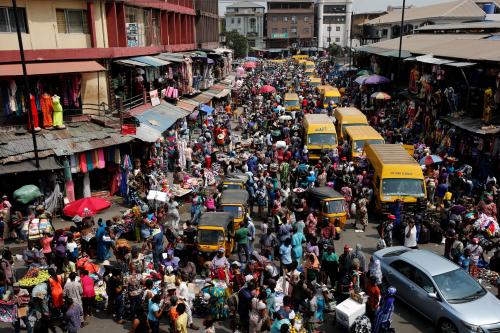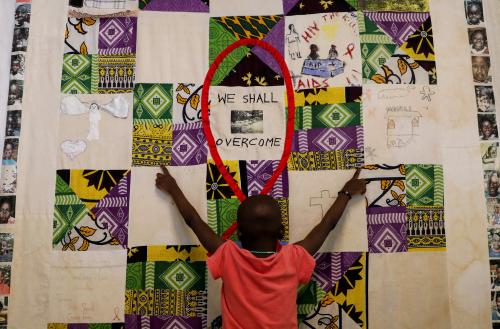The United Nations Economic Commission for Africa’s latest economic report on Africa, Urbanization and Industrialization for Africa’s Transformation, examines the long-term development outlook for the region, with a special focus on urbanization and industrialization. The report underscores Africa’s need to leverage the opportunities presented by urbanization to enable and drive industrial development, especially because the continent will be predominantly urban in less than 20 years. To do so, it argues that African countries must adopt the right policy frameworks anchored in national development planning. Such frameworks should integrate industrial targets as a guiding force for urban planning and spatial policies.
According to the report, developing countries show great diversity in how they urbanize and structurally transform their economies from agriculture into manufacturing and services. In Africa, even the extent to which countries have urbanized varies greatly. Figure 2.17 separates African countries into four quadrants, depending on their extent of urbanization (share of population living in urban areas) and GNI per capita. The quadrants are: (I) low urban population-high income; (II) high urban population-high income; (III) high urban population-low income; and (IV) low urban population-low income. According to the figure, the majority of African countries fall into Quadrant IV, with low urbanization and low GNI per capita.

Most countries with income levels above $6000 per capita have approximately 50 percent or more of their population located in urban areas. Only five of the 15 countries with high levels of per capita income have under 50 percent of their population located in urban areas; these are Angola, Egypt, Equatorial Guinea, Mauritius, and Namibia (in Quadrant I). Still, these five countries have a relatively high average urbanization rate of 43 percent and an average GNI per capita of $13,056.
Several African countries do not follow the general trend. Quadrant III shows seven countries with levels of urbanization above 50 percent but which have a low average GNI per capita of $3,688. Furthermore, there is variation in GNI per capita among countries with higher percentages of urban populations in Quadrants II and III. For example, GNI per capita varies from $1,507 (Gambia) to $23,300 (Seychelles), though their urban population shares are comparable. Similarly, there is variation in the urban populations among countries with higher GNI per capita in Quadrants I and II. Due to this wide variation, the report calls Africa’s urbanization “heterogeneous urbanization.”
In terms of the interactions between urbanization and income levels, African countries generally exhibit the same positive correlation as seen in other regions of the world between the extent of urbanization and GNI per capita, suggesting that African countries tend to urbanize as they develop (Figure 2.16).

In order to increase GNI per capita alongside urbanization, the report recommends that African countries’ policy responses cover the entire rural-urban continuum and that national development planning include targeted approaches to policies that distinguish between secondary towns and large cities.
Shobhit Kumar contributed to this post.
The Brookings Institution is committed to quality, independence, and impact.
We are supported by a diverse array of funders. In line with our values and policies, each Brookings publication represents the sole views of its author(s).








Commentary
Figure of the week: Connecting urbanization and industrialization in Africa
July 27, 2017